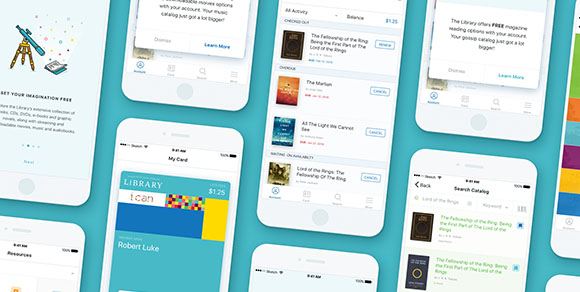
Library Journal, in collaboration with SirsiDynix, recently conducted a survey of 618 public libraries to gather information about mobile device trends in libraries. Their report reveals the increasing use of mobile-friendly websites and apps in public libraries.
Out of the libraries that responded to the survey, about 2 in 5 (37%) currently offer a mobile app to their patrons and nearly three-quarters (72%) have a website that is optimized for use on mobile devices. Libraries serving more than 500,000 patrons were more likely to respond that they have an app, resulting in about 7 in 10 (69%) larger libraries compared to a little less than a quarter (22%) of smaller libraries. Mobile optimization of the library website is more consistent across library sizes; 2 in 3 (65%) smaller libraries described their website as mobile-friendly and about three-quarters (74%-77%) of larger libraries said the same.
Library apps serve varying purposes for each library, but nearly all (97%) of the responding libraries reported that their library provides mobile access to the library’s catalog. Catalog access is by far the most common app functionality, followed by a library event calendar (68%), ebook and audiobook checkout (60%), and mobile library card/digital barcode (60%). Respondents also clarified the functionalities that they want their apps to offer, including fine payment (69%), library event calendars (62%), and remote sign-up for events or library cards (51%).
Libraries reported that about 1 in 10 (12%) library users have actually downloaded the library’s app to their smartphone or tablet. About 2 in 5 (38%) acknowledged that their app appeals to certain patrons, including young adults, students, and “everyone but seniors.” These audiences could influence how libraries market their apps. Most respondents said that their apps were advertised via the library website (64%) and on social media (30%). Less off-line marketing took place, but some respondents advertised the app using posters (19%), newsletters (12%), and bookmarks (6%).
For more survey results, check out the full report here.
Note: This post is part of our series, “The LRS Number.” In this series, we highlight statistics that help tell the story of the 21st-century library.